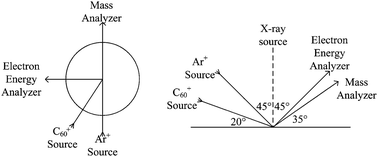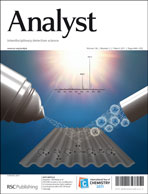Cluster ion sputtering has been proven to be an effective technique for depth profiling of organic materials. In particular, C60+ ion beams are widely used to profile soft matter. The limitation of carbon deposition associated with C60+ sputtering can be alleviated by concurrently using a low-energy Ar+ beam. In this work, the role of this auxiliary atomic ion beam was examined by using an apparatus that could analyze the sputtered materials and the remaining target simultaneously using secondary ion mass spectrometry (SIMS) and X-ray photoelectron spectrometry (XPS), respectively. It was found that the auxiliary 0.2 kV Ar+ stream was capable of slowly removing the carbon deposition and suppresses the carbon from implantation. As a result, a more steady sputtering condition was achieved more quickly with co-sputtering than by using C60+ alone. Additionally, the Ar+ beam was found to interfere with the C60+ beam and may lower the overall sputtering rate and secondary ion intensity in some cases. Therefore, the current of this auxiliary ion beam needs to be carefully optimized for successful depth profiling.

You have access to this article
 Please wait while we load your content...
Something went wrong. Try again?
Please wait while we load your content...
Something went wrong. Try again?


 Please wait while we load your content...
Please wait while we load your content...